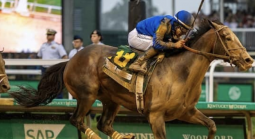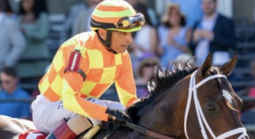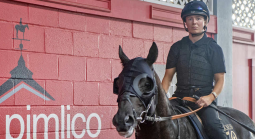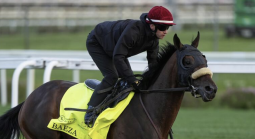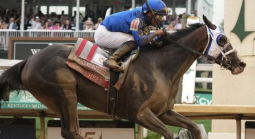History of the Triple Crown Races
All three Triple Crown races have distinct histories and traditions. Together, they comprise one of the most exciting events in sports: the challenge of a horse trying to win three races in a seven-week span opposite some of the stiffest competition American and international thoroughbred racing has to offer. The races are open to male and female horses 3 years of age.
Kentucky Derby
Dubbed the “Run for the Roses” and “The Fastest Two Minutes in Sports,” there are few sporting events worldwide that rival the pageantry and prestige of the Kentucky Derby. The Derby takes place on the first Saturday in May every year with 155,000 fans in attendance and a worldwide television audience numbering in the millions. It is the longest continually held sporting event in America and is run over Churchill Downs’ main dirt track in Louisville, Kentucky at a distance of 1 ¼ miles.
Scroll Down
The field of 20 is determined through a series of prep races the previous fall and winter throughout America, Europe, and Asia. The allure of the Derby is that no matter the purchase price or bloodline, any horse is eligible to qualify. Every year, there are underdog stories aplenty on the road to the Derby with some trainers only having a handful of horses in the barns and others having in upwards of 200 in operations throughout the country.
The first Derby was contested in 1875 with Aristides and jockey Oliver Lewis prevailing. From 1875-1895, the race was contested a 1 ½ miles before switching to its present-day distance of 1 ¼ in 1896. Radio coverage of the race started in 1925, with live television coverage following in 1947. Secretariat, lauded in history and popular culture as one of the all-time greats holds the race record time, set in 1973.
Many traditions accompany the race always held on the first Saturday in May, including mint juleps, a cocktail comprised of Kentucky bourbon, mint, and syrup. The horses enter the track to a stirring and emotional rendition of “My Old Kentucky Home” and the winning horse is presented a blanket of roses in the winner’s circle.
Preakness Stakes
The middle jewel of the Triple Crown is the Preakness Stakes, held annual at Pimlico Race Course in Baltimore, Maryland. The race distance is 1 3/16 over Pimlico’s dirt track. The stretch of Pimlico is considerably shorter than any other Triple Crown venue. The race is nicknamed “The Run for the Black Eyed Susans” as its victor is presented a bed of Maryland’s state flower in the winner’s circle.
First run in 1873 and named for a colt bearing the same name, the Preakness has had its share of notable winners, including 13 horses that departed Baltimore and headed north to Belmont on their way to Triple Crowns. From 1890-1908, the race was held in other locations, mostly in New York, before returning to Pimlico to stay in 1909. The race has been run at seven different distances, settling on its current 1 3/16 distance in 1925.
Similar to the Kentucky Derby, the Preakness has its own signature cocktail, the Black Eyed Susan, and horses are serenaded with a rendition of “Maryland my Maryland” upon entering the track. Pimlico’s infield cupola is immediately painted in the winning silks to honor the Preakness champion as well.
Belmont Stakes
The third and final leg of the vaunted Triple Crown, the Belmont Stakes is held annually at Belmont Park in Elmont, New York at a distance of 1 ½ miles on the track's spacious dirt course dubbed “Big Sandy.” Thirteen horses have completed the Triple Crown and cemented their legacies on the track’s seemingly endless home stretch. As such it is dubbed “The Test of a Champion” as its distance and place in the racing calendar presents a formidable challenge to its entrants.
The first Belmont Stakes was held in 1867 at New York’s Jerome Park, which was its home until 1890 when the scene shifted to Morris Park. The race settled at its current home, Belmont Park in 1905. The race has been contested at five different distances, settling on its current-day 1 ½ in 1926.
The race has its own character and traditions, as Frank Sinatra’s “New York, New York” greets the horses and riders upon their arrival onto the course and a blanket of white carnations is laid upon the victor upon his entrance to the winner’s circle. The Belmont Jewel has been the race’s signature cocktail since 2011.
Go to www.RealBookies.com and sign up to find out more about our Triple Crown contest!











